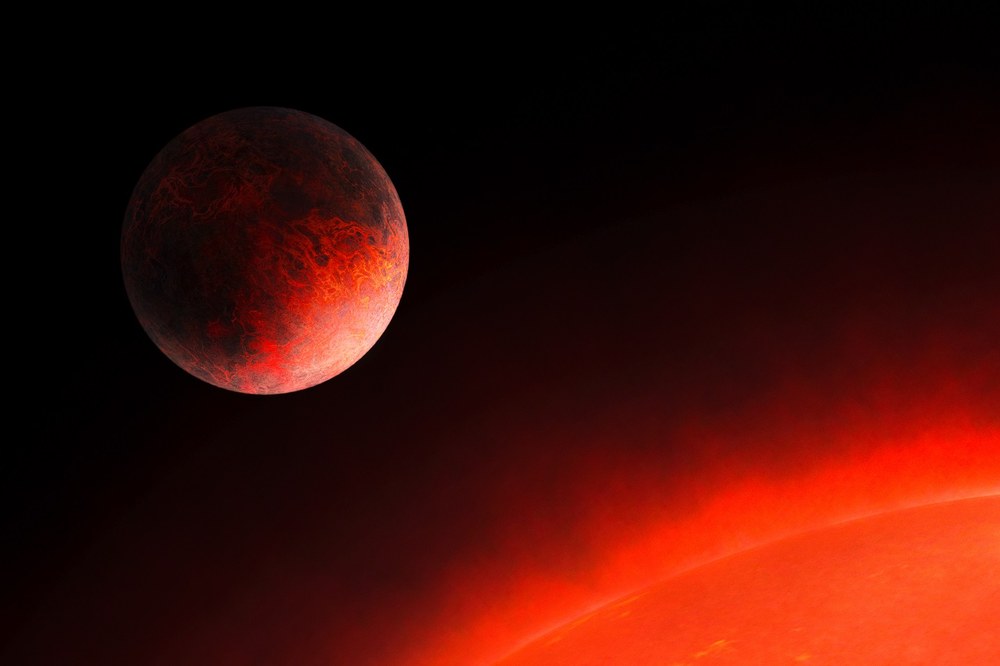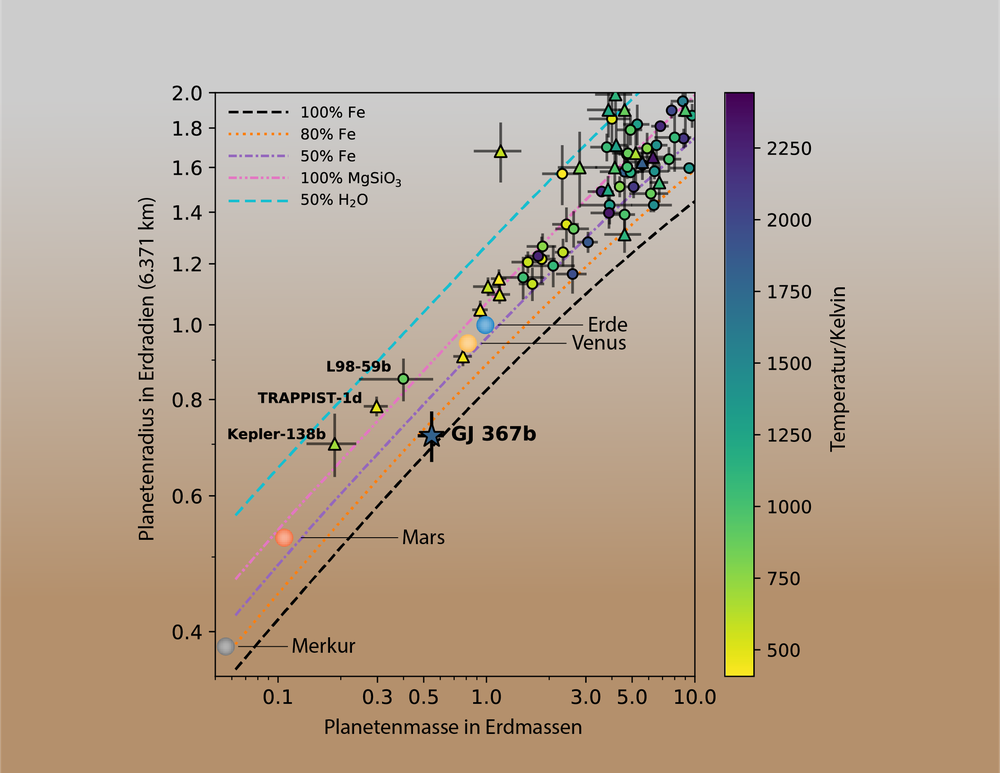An eight-hour year


- An international team of scientists led by the DLR Institute of Planetary Research is characterising the newly discovered extrasolar planet GJ 367 b.
- The results were published in the scientific journal Science on 2 December 2021.
- GJ 367 b is one of the lightest of the 5000 exoplanets known today and orbits its parent star in just under eight hours.
- Focus: Space, extrasolar planets, planetary research
As far as extrasolar planets go, 'GJ 367 b' is a featherweight. With half the mass of Earth, the newly discovered planet is one of the lightest among the nearly 5000 exoplanets known today. It takes the extrasolar planet approximately eight hours to orbit its parent star. With a diameter of just over 9000 kilometres, GJ 367 b is slightly larger than Mars. The planetary system is located just under 31 light years from Earth and is thus ideal for further investigation. The discovery demonstrates that it is possible to precisely determine the properties of even the smallest, least massive exoplanets. Such studies provide a key to understanding how terrestrial planets form and evolve.
An international group of 78 researchers led by Kristine W. F. Lam and Szilárd Csizmadia from the German Aerospace Center (Deutsches Zentrum für Luft- und Ruamfahrt; DLR) Institute of Planetary Research report on the results of their studies in the scientific journal Science. With an orbital period of only one-third of an Earth day, GJ 367 b is a fast mover. "From the precise determination of its radius and mass, GJ 367b is classified as a rocky planet," reports Kristine Lam. "It seems to have similarities to Mercury. This places it among the sub-Earth sized terrestrial planets and brings research one step forward in the search for a 'second Earth'."
More precise exoplanet trackers possible
A quarter of a century after the first discovery of an extrasolar planet, the focus has shifted to characterising these planets more precisely, in addition to making new discoveries. At present, it is possible to construct a much more precise profile for most known exoplanets. Many exoplanets were discovered using the transit method – the measurement of minute differences in the emitted light, or apparent magnitude, of a star as a planet passes in front of it (with respect to the observer). GJ 367 b was also discovered using this method, with the help of NASA's Transiting Exoplanet Survey Satellite (TESS).
Origin of the small fast-moving planets still unknown
GJ 367 b belongs to the 'ultra-short period' (USP) group of exoplanets that orbit their star in less than 24 hours. "We already know a few of these, but their origins are currently unknown," says Kristine Lam. "By measuring the precise fundamental properties of the USP planet, we can get a glimpse of the system's formation and evolution history." Following the discovery of this planet using TESS and the transit method, the spectrum of its star was then studied from the ground using the radial velocity method. The mass was determined using the HARPS instrument on the European Southern Observatory's 3.6m Telescope. With the meticulous study and combination of different evaluation methods, the radius and mass of the planet were precisely determined: its radius is 72 percent that of Earth's, and its mass 55 percent that of Earth's.
Highest precision for radius and mass
By determining its radius and mass with a precision of 7 and 14 percent respectively, the researchers were also able to draw conclusions about the exoplanet's inner structure. It is a low-mass rocky planet, but is more dense than the Earth. "The high density indicates the planet is dominated by an iron core," explains Szilárd Csizmadia. "These properties are similar to those of Mercury, with its disproportionately large iron and nickel core that differentiates it from other terrestrial bodies in the Solar System." However, the planet's proximity to its star means it is exposed to extremely high levels of radiation, more than 500 times stronger than what the Earth experiences. The surface temperature could reach up to 1500 degrees Celsius – a temperature at which all rocks and metals would be melted. Therefore, GJ 367 b cannot be considered a 'second Earth'.
Parent star is a 'red dwarf'
The parent star of this newly discovered exoplanet, a red dwarf called GJ 367, is only about half the size of the Sun. This was beneficial for its discovery as the transit signal of the orbiting planet is particularly significant. Red dwarfs are not only smaller, but also cooler than the Sun. This makes their associated planets easier to find and characterise. They are among the most common stellar objects in our cosmic neighbourhood and are therefore suitable targets for exoplanet research. Researchers estimate that these red dwarfs, also known as 'class M stars', are orbited by an average of two to three planets.
Scientific publication
The Science article can be found at: www.sciencemag.org
doi: 10.1126/science.aay3253
